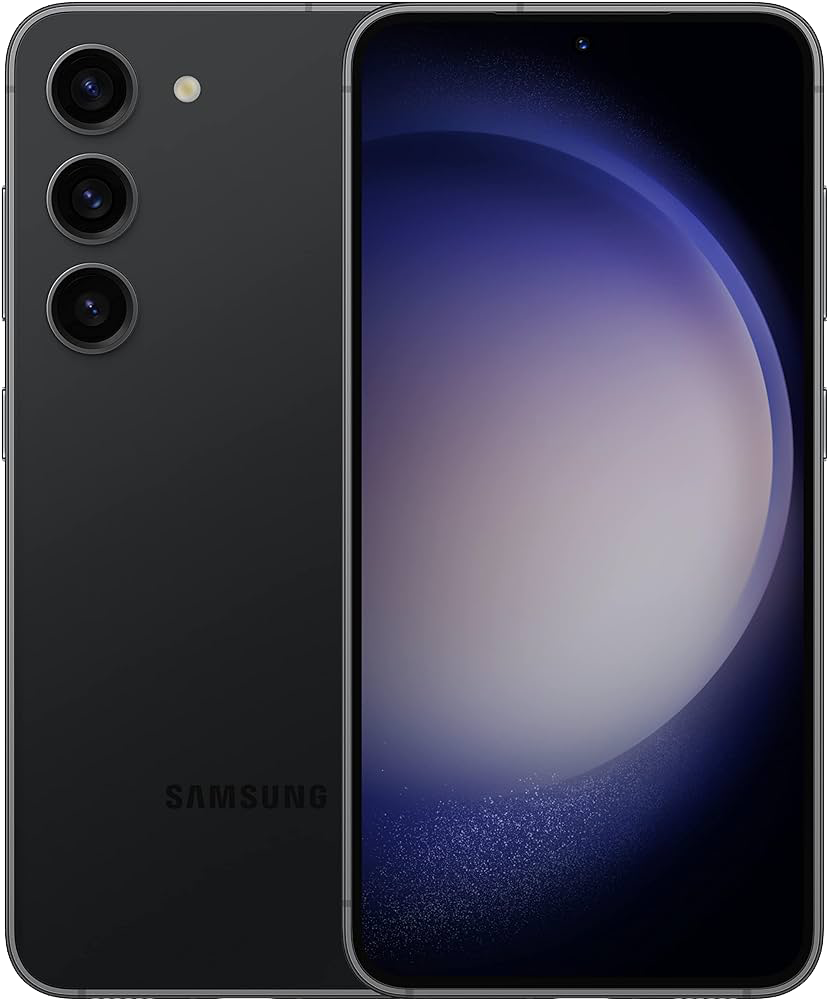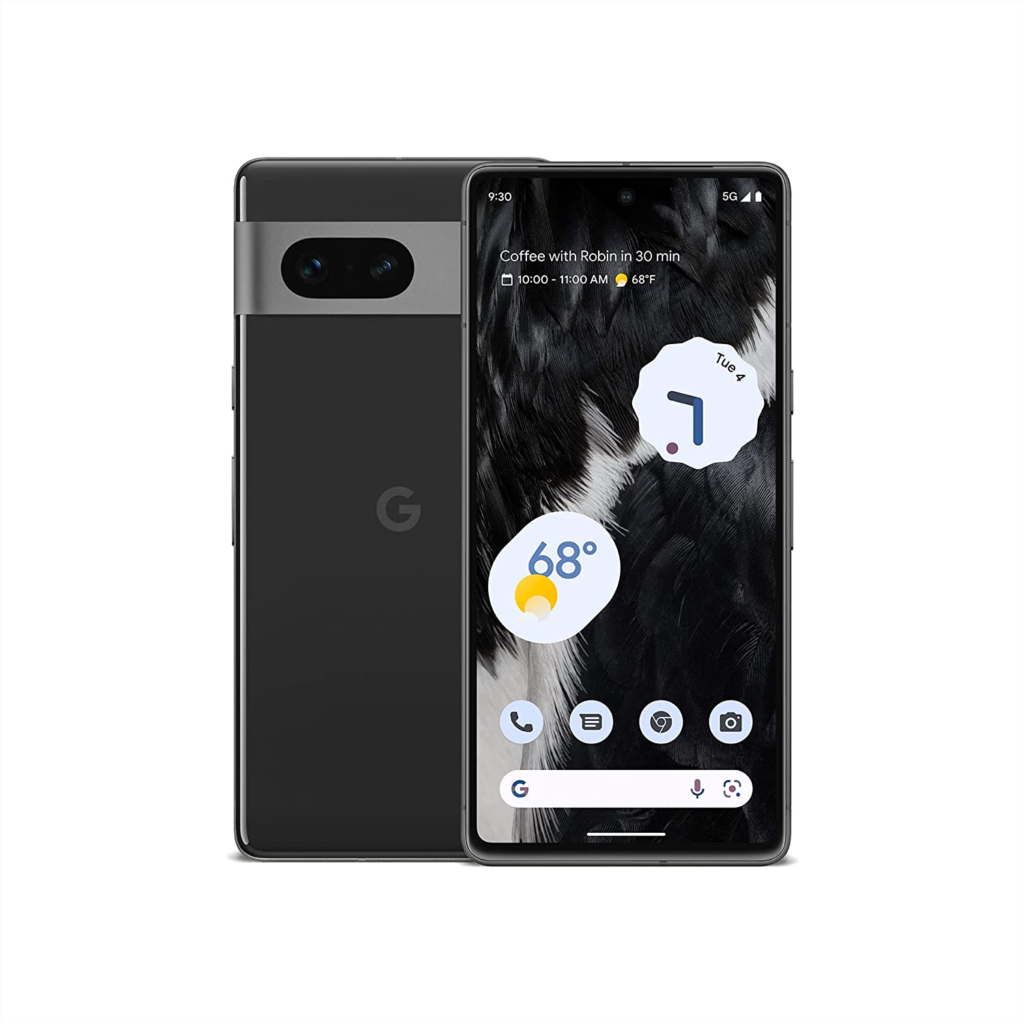Comparison of Latest Flagships: Samsung Galaxy S23 vs. Google Pixel 7
Samsung Galaxy S23:

The Samsung Galaxy S23 stands out as a versatile flagship, impressing across various aspects. Its notable strengths include a powerful bespoke chipset, a smooth 120Hz screen, and long-term software support. However, the drawback lies in its relatively high price and a strong resemblance to its predecessor. Some enthusiasts might also miss a 108MP sensor.
Google Pixel 7:

In contrast, the Google Pixel 7 offers a budget-friendly flagship experience. It shines with remarkable cameras and user-friendly software, complemented by a distinctive design and an attractive price point. Nevertheless, it falls short due to its dated 90Hz display, absence of a telephoto camera, and a chipset that’s not the most powerful.
The Samsung Galaxy S23 and the Google Pixel 7 aren’t the pinnacle of what their respective companies offer, yet they come quite close. Positioned as high-end alternatives to their Pro and Ultra counterparts, they feature more compact screens. Consequently, they find themselves in direct competition for the attention of consumers seeking high-quality Android devices that don’t break the bank.
While these two smartphones share certain similarities, their differences are equally noteworthy. To gain a comprehensive understanding of their distinctions, continue reading to explore their comparative analysis.
Samsung Galaxy S23 vs. Google Pixel 7: Price and Availability
Let’s compare the pricing and availability of the Samsung Galaxy S23 and Google Pixel 7.
Price Comparison:
| Model | Samsung Galaxy S23 | Google Pixel 7 |
|---|---|---|
| 8GB / 128GB | $799.99 / £849 / AU$1,349 | $599 / £599 / AU$999 |
| 8GB / 256GB | $859.99 / £899 / AU$1,449 | $699 / £699 / AU$1,129 |
The pricing analysis is straightforward. Both phones offer identical RAM options, with the only distinction being the storage capacity, 128GB or 256GB.
Price Differences:
The Samsung Galaxy S23 costs more in either storage variant. For the 128GB model, it’s approximately $200 / £250 / AU$350 more than the Pixel 7. If you opt for the 256GB version, expect to pay around $160 / £200 / AU$320 more for the Galaxy S23 than the Pixel 7.
In practice, the price gap can be even more pronounced. The Pixel 7, launched in October 2022, often receives discounts, while the Galaxy S23, introduced in February 2023, tends to maintain its original price or something close to it.
Availability:
Both smartphones are widely accessible worldwide, ensuring you won’t encounter significant challenges in finding either of them.

Samsung Galaxy S23 vs. Google Pixel 7: Design
Let’s delve into the design comparison of the Samsung Galaxy S23 and the Google Pixel 7.
Distinctive Aesthetics:
The Google Pixel 7 boasts a distinct appearance, featuring a wide metal camera visor spanning the rear. In contrast, the Samsung Galaxy S23 houses a trio of lenses in the top left corner without significant surrounding housing.
Variation in Colors:
Color options also vary. The Pixel 7 offers Obsidian, Lemongrass (a soft green), and Snow, while the Samsung Galaxy S23 is available in Cream, Phantom Black, Green, Lavender, Graphite, and Lime.
Dimensions and Weight:
In terms of dimensions, the Google Pixel 7 measures 155.6 x 73.2 x 8.7mm and weighs 197g, making it larger, thicker, and heavier than the Samsung Galaxy S23, which has dimensions of 146.3 x 70.9 x 7.6mm and weighs 168g.
Common Design Elements:
Both phones share several design features, including a flat screen, a punch-hole camera at the top center of the display, IP68 water and dust resistance, an aluminum frame, and a glass back. Notably, the Samsung Galaxy S23 employs durable Gorilla Glass Victus 2 on both the screen and back, whereas the Google Pixel 7 uses the slightly older and less robust original Victus.
Samsung Galaxy S23 vs. Google Pixel 7: Display
Let’s explore the display differences between the Samsung Galaxy S23 and Google Pixel 7.
Samsung Galaxy S23 Display:
- 6.1-inch 1080 x 2340 AMOLED
- 425 PPI
- 120Hz refresh rate
- HDR10+ support
- Peak brightness: 1,750 nits
Google Pixel 7 Display:
- 6.3-inch 1080 x 2400 AMOLED
- 416 PPI
- 90Hz refresh rate
- HDR10+ support
- Peak brightness: 1,400 nits
The Galaxy S23 features a slightly smaller screen with higher pixel density, a faster 120Hz refresh rate, and a brighter display, reaching 1,750 nits peak brightness. The Pixel 7 has a marginally larger screen but falls short in these aspects.
Our reviewers favored the Galaxy S23’s display, rating it 4.5/5, while the Pixel 7’s screen received a 3.5/5, primarily due to its lower refresh rate.
Samsung Galaxy S23 vs. Google Pixel 7: Cameras
Now, let’s delve into the camera comparison between the Samsung Galaxy S23 and the Google Pixel 7.
Camera Comparison:
| Samsung Galaxy S23 | Google Pixel 7 | |
|---|---|---|
| Main Camera | 50MP f/1.8 with OIS | 50MP f/1.9 with OIS |
| Ultra-Wide Camera | 12MP f/2.2 | 12MP f/2.2 |
| Telephoto Camera | 10MP f/2.4 (3x optical zoom) with OIS | N/A |
| Front Camera | 12MP f/2.2 | 10.8MP f/2.2 |
| Unique Features | Samsung offers optical image stabilization for main and telephoto. | Google has a unique ultra-wide selfie camera. |
Camera Performance:
Both phones excel in photography with robust image processing. Google’s Pixel 7 introduces innovative features like Photo Unblur and Magic Eraser.
Our reviews awarded both camera setups 4/5. However, for zoom enthusiasts, the Samsung Galaxy S23 shines. If zoom isn’t a priority, the Pixel 7 has an edge.
Video enthusiasts may prefer the Samsung Galaxy S23, offering 8K quality, while the Pixel 7 tops out at 4K.
Samsung Galaxy S23 vs. Google Pixel 7: Performance & Features
Now, let’s examine the performance and features of the Samsung Galaxy S23 and Google Pixel 7.
Performance:
| Samsung Galaxy S23 | Google Pixel 7 | |
|---|---|---|
| RAM | 8GB | 8GB |
| Chipset | Snapdragon 8 Gen 2 for Galaxy (Overclocked Snapdragon 8 Gen 2) | Tensor G2 (Prioritizes AI and machine learning) |
| Benchmark Performance | Leading among Android phones | Falls behind in benchmarks, especially in gaming |
| Real-world Usage | Minimal difference; AI enhances tasks like image processing and speech-to-text. | Adequate for everyday tasks; AI-powered features. |
Storage Options:
Both phones offer storage choices of 128GB or 256GB.
Battery and Charging:
| Samsung Galaxy S23 | Google Pixel 7 | |
|---|---|---|
| Battery Capacity | 3,900mAh | 4,355mAh |
| Wired Charging | 25W | 20W |
| Wireless Charging | 15W (or 25W with compatible stand) | 12W (20W with Pixel Stand) |
Battery Life:
The Samsung Galaxy S23 has a slight edge in battery life. In reviews, it lasted into the following morning, whereas the Pixel 7 barely made it through a second day.
Samsung Galaxy S23 vs. Google Pixel 7: Software
Let’s dive into the software comparison for the Samsung Galaxy S23 and the Google Pixel 7.
Operating System:
Both phones run Android 13. The Samsung Galaxy S23 features One UI, offering extensive customization.
Interface Preference:
Interface preference is subjective. It’s a matter of personal taste to decide which phone offers a better interface.
Update Speed:
Google Pixel 7 wins in update speed, receiving new Android versions on day one. Samsung may have a slight delay.
Long-term Support:
Samsung Galaxy S23 excels in long-term support, pledging at least four years of OS updates, compared to Google’s promise of three years. Both ensure five years of security patches.
Buying Decision:
Consider your priorities:
- For higher refresh rate, brighter screen, durability, telephoto lens, 8K video, robust chipset, faster wired charging, potentially better battery life, and more Android updates, choose the Samsung Galaxy S23.
- If cost, larger screen, camera software, AI capabilities, faster Android updates, and a larger battery matter most, opt for the Google Pixel 7.
Both phones received four stars in reviews, so you can’t go wrong. Your choice depends on your specific needs and preferences.


